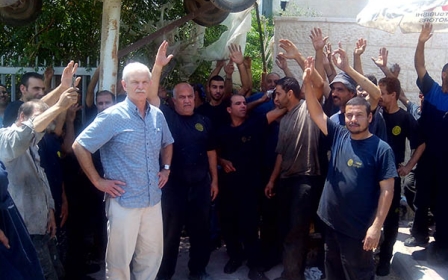The Ancient Samaritans of Mount Gerizim

MOUNT GERIZIM - An ethnoreligious group descended from the ancient Semitic inhabitants of the region, the Samaritans say theirs is the true religion of the ancient Israelites.
Samaritanism is Abrahamic and closely-related to Judaism, which the Samaritans say was altered and amended after being brought back by those returning from Babylonian exile.
While the Samaritans once numbered 1.5 million, the community all but disappeared, dwindling down to a mere 150 people by 1917.
Today, there are roughly 700 Samaritans left in the world. About 360 reside on Mount Gerizim, perched above the Palestinian city of Nablus in the occupied West Bank, while the rest live in Holon, just outside of Tel Aviv.
The Samaritans on Mount Gerizim hold both Israeli and Palestinian ID cards; many members of the community previously lived in Nablus, but moved to the mountain-top community when violence broke out during the First Intifada.
The Samaritans say that Mount Gerizim was the original holy place of Israel, and the major difference between Jews and Samaritans is the location of their holiest place of worship; Jerusalem according to the Jewish faith, or Mount Gerizim in Samaritanism.
The High Priest of The Samaritans, Abdallah Wasef Tawfiq Al Kahen, and his brother, Husni Al Kahen, say they can trace their lineage all the way from Adam to Moses, a fact that is extremely important to the community. According to tradition, the high priest himself must be from the lineage of the Levi tribe.
The Samaritans also claim to have the oldest language in the world: ancient Hebrew.
Stay informed with MEE's newsletters
Sign up to get the latest alerts, insights and analysis, starting with Turkey Unpacked
Middle East Eye delivers independent and unrivalled coverage and analysis of the Middle East, North Africa and beyond. To learn more about republishing this content and the associated fees, please fill out this form. More about MEE can be found here.




